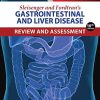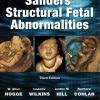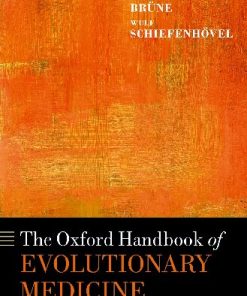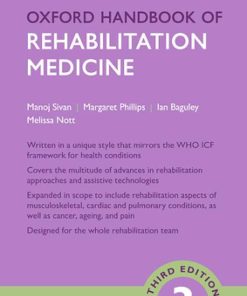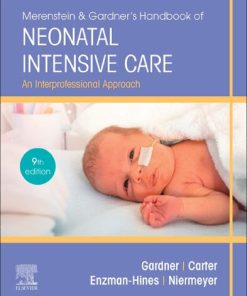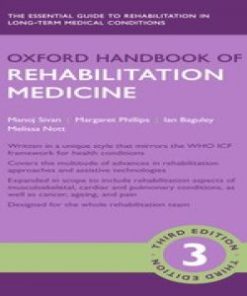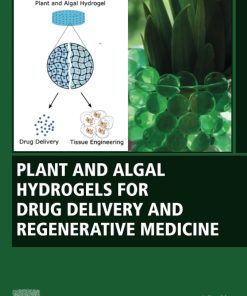(EBook PDF) Handbook of Innovations in CNS Regenerative Medicine 1st Edition by António Salgado 0128180854 9780128180853 full chapters
$50.00 Original price was: $50.00.$25.00Current price is: $25.00.
Handbook of Innovations in CNS Regenerative Medicine 1st Edition by António Salgado – Ebook PDF Instant Download/DeliveryISBN: 0128180854, 9780128180853
Full download Handbook of Innovations in CNS Regenerative Medicine 1st Edition after payment
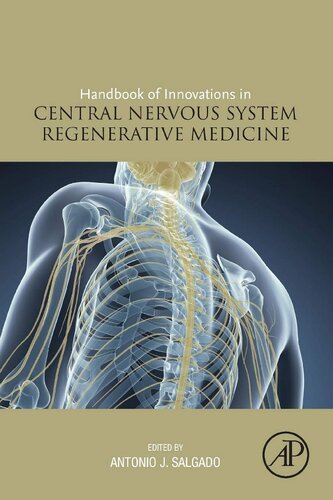
Product details:
ISBN-10 : 0128180854
ISBN-13 : 9780128180853
Author: António Salgado
Handbook of Innovations in CNS Regenerative Medicine provides a comprehensive overview of the CNS regenerative medicine field. The book describes the basic biology and anatomy of the CNS and how injury and disease affect its balance and the limitations of the present therapies used in the clinics. It also introduces recent trends in different fields of CNS regenerative medicine, including cell transplantation, bio and neuro-engineering, molecular/pharmacotherapy therapies and enabling technologies. Finally, the book presents successful cases of translation of basic research to first-in-human trials and the steps needed to follow this path.
Handbook of Innovations in CNS Regenerative Medicine 1st Table of contents:
1 Insights on nervous system biology and anatomy
1.1 Introduction
1.2 Development of the vertebrate nervous system
1.2.1 Development of the trilaminar embryo
1.2.2 Neural induction
1.2.3 Neurulation
1.2.4 Development of brain vesicles
1.3 General organization of the nervous system
1.3.1 Spinal cord
1.3.2 Brain
1.3.2.1 Brainstem
1.3.2.2 Cerebellum
1.3.2.3 Diencephalon
1.3.2.4 Basal ganglia
1.3.2.5 Cortex
1.3.2.5.1 Neocortex
1.3.2.5.2 Hippocampal formation
1.3.2.5.3 Olfactory cortex
1.3.2.5.4 Amygdala
1.3.3 Meninges and the ventricular system
1.3.3.1 Meninges
1.3.3.2 Ventricular system
1.4 Cells of the nervous system
1.4.1 Neurons
1.4.2 Glial cells
1.4.2.1 Oligodendrocytes and Schwann cells
1.4.2.2 Astrocytes
1.4.2.3 Microglia
1.4.3 Ependymal cells
1.5 Technical approaches to study the nervous system
1.6 Conclusions
References
2 Overview of Alzheimer’s and Parkinson’s diseases and the role of protein aggregation in these neur
2.1 Alzheimer’s disease
2.2 Prevalence of Alzheimer’s disease
2.3 Diagnosis of Alzheimer’s disease
2.4 Neurodegeneration and neurobiology of Alzheimer’s disease
2.5 Progression of amyloid deposition throughout the brain
2.6 Genetic influences
2.7 The amyloid cascade hypothesis
2.8 Parkinson’s disease
2.9 Prevalence of Parkinson’s disease
2.10 Diagnosis of Parkinson’s disease
2.11 Neurodegeneration and neurobiology of Parkinson’s disease
2.12 Progression of α-synuclein deposition throughout the brain
2.13 Genetic and environmental causes
2.14 Common cellular mechanisms in neurodegenerative diseases
2.15 Conclusions
2.16 Acknowledgments
References
3 Introduction to trauma in the central nervous system
3.1 Introduction
3.2 The current landscape of central nervous system trauma
3.3 Stages of central nervous system injury
3.3.1 Primary injury
3.3.2 Secondary injury: an overview of acute, subacute, and chronic phases
3.4 Traumatic spinal cord injury pathophysiology
3.4.1 Acute injury
3.4.1.1 Patterns of injury
3.4.1.2 Hypotension and ischemia
3.4.1.3 Spinal shock
3.4.1.4 Glutamate excitotoxicity and ion imbalance
3.4.1.5 Free radical formation and oxidative stress
3.4.1.6 Inflammation and angiogenesis
3.4.1.7 Edema
3.4.2 Subacute injury
3.4.2.1 Cellular apoptosis
3.4.2.2 Neurite growth-inhibitory factors
3.4.2.3 Endogenous stem cell response
3.4.2.4 Glial scar formation
3.4.3 Chronic injury
3.4.3.1 Altered neural circuitry
3.4.3.2 Syrinx formation
3.5 Traumatic brain injury
3.5.1 Classification
3.5.2 Cerebral perfusion and ischemia
3.5.3 Excitotoxicity and oxidative stress
3.5.4 Inflammation
3.5.5 Long-term sequelae
3.6 Guidelines for the management of neurotrauma
3.7 Conclusion
Acknowledgments
References
4 Current clinical approaches in neurodegenerative diseases
4.1 Alzheimer’s disease and Parkinson’s disease in a clinical context
4.1.1 Epidemiology of Parkinson’s disease
4.1.2 Epidemiology of Alzheimer’s disease
4.1.3 Clinical diagnosis and the natural history of Parkinson’s disease
4.1.4 Clinical diagnosis and the natural history of Alzheimer’s disease
4.1.5 Neuropathology and etiopathogenesis of Parkinson’s disease
4.1.6 Neuropathology and etiopathogenesis of Alzheimer’s disease
4.1.7 Genetics of Parkinson’s disease
4.1.8 Genetics of Alzheimer’s disease
4.2 Current pharmacotherapies used in Alzheimer’s and Parkinson’s diseases
4.2.1 Current therapeutics in Parkinson’s disease
4.2.2 Current therapeutics in Alzheimer’s disease
4.3 Pitfalls of the clinical trials
4.3.1 Pitfalls in Parkinson’s disease
4.3.1.1 Dopaminergic targets
4.3.1.2 Nondopaminergic targets
4.3.1.3 Other failed therapies in Parkinson’s disease
4.3.2 Pitfalls in Alzheimer’s disease
4.3.2.1 Therapies targeted at amyloid
4.3.2.2 Reducing Aβ generation
4.3.2.3 Accelerating Aβ clearance
4.4 New drugs currently being developed
4.4.1 New drugs in Parkinson’s disease
4.4.1.1 Cellular therapies
4.4.1.2 Gene therapy
4.4.1.3 Iron-targeting agents
4.4.1.4 α-Synuclein active immunotherapy
4.4.1.5 LRRK2 inhibition
4.4.1.6 Incrementing the lysosomal system
4.4.2 New drugs in Alzheimer’s disease
4.4.2.1 Therapies targeted at tau
4.4.2.2 Tau stabilizers and aggregation inhibitors
4.4.2.3 Therapies targeted at tau posttranslational modifications
4.4.2.4 Anti-tau immunotherapy
4.4.2.5 Therapies targeted at ApoE
4.4.2.6 Neurotrophic factors
4.4.2.7 Neuroinflammation and oxidative stress
4.5 Conclusion and future challenges
References
5 Neuroprotection in the injured spinal cord
5.1 Spinal cord injury in a clinical context
5.1.1 Current spinal cord injury clinical management
5.2 Behind spinal cord injury
5.2.1 Permeability and vascular alterations
5.2.2 Metabolic alterations
5.2.3 Ionic disruption and excitotoxicity
5.2.4 Inflammatory response
5.2.5 Spinal cord scarring
5.3 Current neuroprotective therapies in spinal cord injury
5.3.1 Nimodipine
5.3.2 Glibenclamide (glyburide, DiaBeta)
5.3.3 Progesterone
5.3.4 Estrogen
5.3.5 Magnesium
5.3.6 Sygen (GM1)
5.3.7 Riluzole
5.3.8 Minocycline
5.3.9 IL-4 cytokine
5.3.10 Erythropoietin
5.3.11 Ibuprofen
5.3.12 Atorvastatin
5.3.13 Hypothermia
5.6 Final remarks
References
6 The therapeutic potential of exogenous adult stem cells for the injured central nervous system
6.1 Introduction
6.2 Adult stem cells and their sources
6.2.1 Neural stem cells
6.2.2 Mesenchymal stem/stromal cells
6.2.3 Induced pluripotent stem cells
6.2.4 Directly induced neural stem cells
6.3 Differentiation along neural lineages
6.3.1 Chemical differentiation
6.3.2 RNAi-mediated differentiation
6.3.3 Genetic reprogramming
6.3.4 Mechanical differentiation
6.4 Challenges in expansion and transplantation
6.4.1 Stability under long-term passaging
6.4.2 Immunogenicity
6.4.3 Timing
6.4.4 Administration routes
6.4.5 Complementary methods
6.5 Adult stem cells in preclinical models of central nervous system diseases
6.5.1 Spinal cord injury
6.5.2 Traumatic brain injury
6.5.3 Stroke
6.5.4 Multiple sclerosis
6.5.5 Amyotrophic lateral sclerosis
6.5.6 Parkinson’s disease
6.5.7 Alzheimer’s disease
6.5.8 Retinal degenerative diseases
6.5.9 Huntington’s disease
6.6 Clinical trials of adult stem cells in the central nervous system
6.6.1 Spinal cord injury
6.6.2 Traumatic brain injury
6.6.3 Stroke
6.6.4 Multiple sclerosis
6.6.5 Amyotrophic lateral sclerosis
6.6.6 Parkinson’s disease
6.6.7 Alzheimer’s disease
6.6.8 Retinal degenerative diseases
6.6.9 Huntington’s disease
6.7 Conclusions
6.8 Acknowledgements
References
7 Biomaterial-based systems as biomimetic agents in the repair of the central nervous system
7.1 Introduction
7.2 Considerations on the pathology of spinal cord trauma
7.2.1 The lesion site: cavitation, connective tissue scarring, and Schwannosis
7.2.2 Beyond the lesion site: Wallerian degeneration and synaptic remodeling
7.3 Positioning biomaterials for central nervous system regenerative medicine
7.4 Biofunctionalized electroconducting microfibers as biomimetic agents in central nervous system r
7.5 Central nervous system regeneration: decomposing the needs to recompose the strategy
7.5.1 Crossing the gap versus closing the gap
7.5.2 Promoting axonal growth and synaptic reconnection beyond the lesion site
7.6 Translational research on biomaterials for central nervous system repair
7.7 Acknowledgments
References
8 Tissue engineering and regenerative medicine in spinal cord injury repair
8.1 Introduction
8.1.1 Pathophysiology of spinal cord injury
8.2 Experimental models of spinal cord injury: methodology, advantages, disadvantages, and behaviora
8.2.1 Animal models of spinal cord injury
8.2.2 Behavioral testing of the animal spinal cord injury
8.2.2.1 Locomotor tests
8.2.2.2 Sensory tests
8.2.2.3 Sensory-motor tests
8.2.2.4 Autonomic tests
8.2.2.5 Training of the animals
8.3 Treatment strategies
8.3.1 Axon growth in spinal cord injury
8.4 Cell therapy: overview, comparison of various types of stem cells, methods of application
8.4.1 Mesenchymal stem cells
8.4.2 Neural stem and progenitor cells
8.4.3 Oligodendrocyte precursor cells
8.4.4 Schwann cells
8.4.5 Olfactory ensheathing cells
8.4.6 Cell transplantation route
8.5 Antioxidant treatment
8.5.1 Epigallocatechin-3-gallate
8.5.2 Curcumin
8.6 Biomaterials in spinal cord injury
8.6.1 Synthetic scaffolds for spinal cord injury
8.6.2 Natural scaffolds
8.6.3 Biomaterials in clinical applications
8.6.4 Combinatory therapies
8.7 Low-level laser therapy
8.8 Future perspectives
8.9 Acknowledgements
8.10 Contribution
References
9 Toward the therapeutic application of small interfering RNA bioconjugates in the central nervous s
9.1 Considerations on therapeutic drug delivery for neurological disorders
9.2 Small interfering RNA
9.3 Barriers for siRNA delivery
9.4 Chemical modifications
9.5 Ribose modifications
9.5.1 Backbone modifications
9.6 Structural modifications
9.7 Bioconjugates
9.7.1 Lipids
9.7.2 Cell-penetrating peptides and polymers
9.7.3 Receptor-ligand conjugates
9.7.4 Antibodies
9.7.5 Aptamers
9.8 Dynamic polyconjugates
9.9 Other delivery systems: nanocarriers
9.10 Future perspectives
Acknowledgements
References
10 Gene therapy approaches in central nervous system regenerative medicine
10.1 Gene therapy
10.2 Gene therapy vectors
10.2.1 Adenovirus
10.2.2 Retrovirus
10.2.3 Lentivirus
10.2.4 Adenoassociated virus
10.2.5 Herpes simplex virus
10.2.6 Nonviral vectors
10.3 Gene therapy for nervous system
10.3.1 Gene therapy vectors for central nervous system
10.3.2 Gene therapy clinical assays for neurodegenerative diseases
10.3.3 Gene therapy approaches for spinal cord injury
10.3.4 Gene therapy approaches for traumatic brain injury
References
11 Gene editing and central nervous system regeneration
11.1 Introduction
11.2 Targeted nucleases for efficient genome editing
11.3 Nuclease-mediated alterations: resolving double-strand breaks
11.4 CRISPR-Cas9 technology
11.4.1 From the natural bacterial system to the engineered nuclease
11.4.2 Dealing with challenges: Cas9 variants and orthologs
11.4.3 CRISPR-Cas9 as means for therapeutic genome editing: evidence in brain disorders
11.4.4 Generation of cellular and animal models for brain disorders
11.4.5 Employing CRISPR-Cas beyond genome editing: gene expression regulation in neurological disord
11.4.6 Clinical translation
Acknowledgment
References
12 Molecular therapeutic strategies in neurodegenerative diseases and injury
12.1 Introduction
12.2 Spinal cord injury
12.2.1 Neurotrophins and growth factors
12.2.2 Inflammation
12.2.3 Promoting axonal growth
12.2.4 Modulation of excitotoxicity
12.2.5 Future directions
12.3 Traumatic brain injury
12.3.1 Growth factors
12.3.2 Modulation of free radicals
12.3.3 Inflammation
12.3.4 Excitotoxicity
12.3.5 Mir-23b, apolipoprotein-E, and Nav1.3 in the preclinical setting
12.3.6 Future directions
12.4 Amyotrophic lateral sclerosis
12.4.1 Excitotoxicity
12.4.2 Neuroprotective and neurotrophic approaches
12.4.3 Antisense-oligonucleotides and RNA interference
12.4.4 Mitochondrial dysfunction and oxidative stress
12.4.5 Neuroinflammation
12.4.6 Aggregation
12.4.7 Future directions
12.5 Multiple sclerosis
12.5.1 Strategies modulating B-lymphocytes
12.5.2 Strategies promoting remyelination
12.5.3 Modulation of T cell response
12.5.4 Modulation of natural killer cells and dendritic cells
12.5.5 Tyrosine-kinase inhibitors
12.5.6 Future directions
12.6 Alzheimer’s disease
12.6.1 AchE inhibition
12.6.2 BACE-1
12.6.3 GSK-3B
12.6.4 MAOs
12.6.5 Metal ions
12.6.6 NMDA receptor
12.6.7 5-HT receptors
12.6.8 Phosphodiesterases
12.6.9 Antiaggregation
12.6.10 Angiotensin system in Alzheimer’s disease
12.6.11 Antiviral therapy in Alzheimer’s disease
12.6.12 Antibody therapy
12.6.13 Flavonoids
12.6.14 Future directions
12.7 Parkinson’s disease
12.7.1 Nucleic acid therapeutics targeting alpha-synuclein
12.7.2 Targeted small molecule inhibitors
12.7.3 Iron chelators
12.7.4 GLP-1 receptor agonists
12.7.5 Viral vector mediated gene therapy
12.7.6 Immunotherapy therapy using vaccines or antibodies against alpha-synuclein
12.7.7 Dihydropyridine calcium channel blockers
12.7.8 Substrate reduction therapies: chaperone-mediated autophagy
12.7.9 Future directions
References
13 Spinal cord stimulation for the recovery of function following spinal cord injury
13.1 Introduction
13.2 A brief history into electricity induced neuromodulation
13.3 Modulation of spinal circuits
13.3.1 Stimulation site and parameters
13.3.2 Functional electrical stimulation: don’t be confused
13.4 Neuromodulation of motor circuits
13.4.1 Locomotor function through epidural stimulation
13.4.1.1 Animal models
13.4.1.2 Human studies
13.4.2 Control of arms and hands
13.4.3 Other developments in neuromodulation of motor control
13.4.4 Autonomic modulation through spinal cord stimulation
13.4.5 Recovery of bladder function
13.4.6 Modulation of breathing
13.4.7 Animal models of spinal cord stimulation
13.5 Conclusion
Acknowledgements
References
14 Electroceutical therapies for injuries of the nervous system
14.1 Introduction
14.2 Effects of electrical fields on neural growth in vitro
14.3 Electrical stimulation for peripheral nerve injuries and regeneration
14.4 Electrical stimulation in spinal cord injuries
14.4.1 Electrical stimulation improves axonal regeneration in the spinal cord
14.4.2 Spinal cord neuromodulation
14.4.2.1 Intraspinal stimulation
14.4.2.2 Epidural spinal stimulation
14.4.2.3 Transcutaneous spinal stimulation
14.4.2.4 Mechanisms of action
14.5 Electrical stimulation in brain injuries
14.5.1 Electrical stimulation for stroke
14.5.2 Techniques for noninvasive brain stimulation
14.5.3 Effects of noninvasive brain stimulation on brain ischemic injury
References
15 Role of mesenchymal stem cells in central nervous system regenerative medicine: past, present, an
15.1 Mesenchymal stem cells: origins
15.2 The paradigm shift: from differentiation to secretome
15.3 In vivo veritas
15.3.1 Spinal cord injury
15.3.2 Parkinson’s disease
15.4 What lies ahead
15.4.1 Secretome-based approaches
15.4.2 Modulation of mesenchymal stem cells secretome profile
15.4.3 New sources for mesenchymal stem cells
15.5 Conclusion
Acknowledgments
References
16 Three-dimensional culture systems in central nervous system research
16.1 Introduction
16.1.1 Traditional methods of central nervous system culture
16.1.2 Shifting to three-dimensional systems
16.1.3 Introduction to three-dimensional systems used in central nervous system research
16.2 Organoids
16.2.1 Definition of organoids
16.2.2 Development of organoids
16.2.3 Disease-specific organoid models
16.2.4 Strengths and limitations of organoids
16.3 Spheroid systems
16.3.1 Definition of spheroids
16.3.2 Development of spheroids
16.3.3 Disease-specific spheroid models
16.3.4 Strengths and limitations of spheroids
16.4 Scaffold-based models
16.4.1 Hydrogels
16.4.1.1 Natural hydrogel scaffolds
16.4.1.1.1 Collagen
16.4.1.1.2 Matrigel
16.4.1.1.3 Fibrin
16.4.1.2 Hybrid hydrogel scaffolds
16.4.1.2.1 Chitosan
16.4.1.2.2 Synthetic peptide-based hydrogels
16.4.1.2.3 Alginate
16.4.2 Solid porous scaffolds
16.4.2.1 Polystyrene
16.4.2.2 Graphene
16.4.3 Fibrous scaffolds
16.4.4 Summary
16.5 Challenges and future directions
16.5.1 Key challenges of advanced central nervous system culture models
16.6 Concluding remarks
Acknowledgments
References
17 Scaffolds for spinal cord injury repair: from proof of concept to first in-human studies and clin
17.1 Scaffold-based strategies to facilitate spinal cord injury repair
17.1.1 Scaffolds combined with neurotrophic factor transplantation to facilitate spinal cord injury
17.1.2 Transplantation of stem cells combined with scaffolds to facilitate spinal cord injury repair
17.2 The mechanisms of motor function recovery in complete transected spinal cord injury animals
17.2.1 Complete transected animal models for evaluating neural regeneration
17.2.2 Mechanisms of motor function recovery in complete spinal cord injury animals
17.2.2.1 Corticospinal tract regeneration for complete spinal cord injury repair
17.2.2.2 Neuronal relay formation with transplanted or endogenous neural stem cells for complete spi
17.3 Clinical study of stem cells and scaffold transplantation for spinal cord injury repair
17.4 Perspectives and challenges
Acknowledgments
References
18 Animal models of central nervous system disorders
18.1 Introduction
18.1.1 Caenorhabditis elegans as a model system of central nervous system disorders
18.1.2 Caenorhabditis elegans as a model for spinal cord injury
18.1.3 C. elegans as a model for Parkinson’s disease
18.1.3.1 Chemical models
18.1.3.2 Genetic models
18.2 Naturally regenerating animal models
18.2.1 Xenopus laevis
18.2.2 Salamander
18.2.3 Zebrafish
18.3 Rodents as a model of central nervous system disorders
18.4 Rodents as a model for spinal cord injury
18.4.1 Types of injury in rodent models
18.5 Rodents as a model for Parkinson’s disease
Acknowledgments
References
19 Bioethics in translation research and clinical trials
19.1 Introduction
19.1.1 Core ethical principles for guiding both basic and clinical (stem cell) research
19.1.2 The need for regulations and ethical guidelines
19.1.3 The need for prioritizing rigorous and safe clinical trials
19.2 The role of research ethics committees
19.3 Conclusion
People also search for Handbook of Innovations in CNS Regenerative Medicine 1st:
your wish is my command meaning
say the word your wish is my command
listen baby your wish is my command
your wish is my command gif
how to respond to your wish is my command
Tags:
Handbook,Innovations,CNS Regenerative,Medicine,António Salgado
You may also like…
Medicine - Others
Oxford Handbook of Evolutionary Medicine 1st Edition Martin Brüne
Medicine - Anesthesiology and Intensive Care
Medicine
Oxford Handbook of Rehabilitation Medicine 3rd Edition by Manoj Sivan 0191088261 9780191088261
Chemistry - Technical & Industrial Chemistry
Innovations in Thermochemical Technologies for Biofuel Processing 1st Edition


